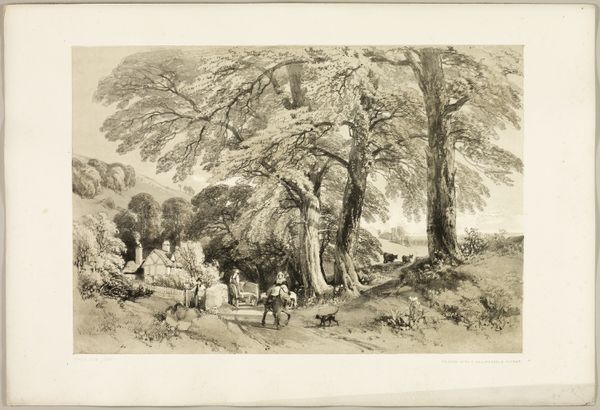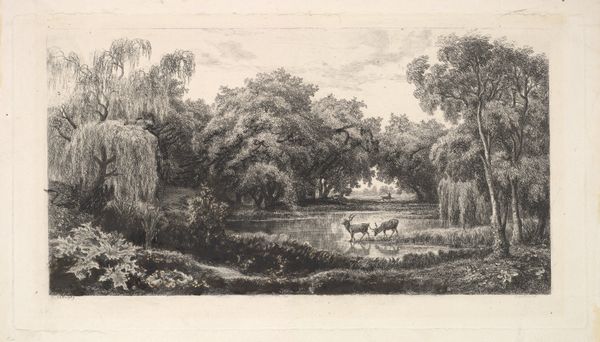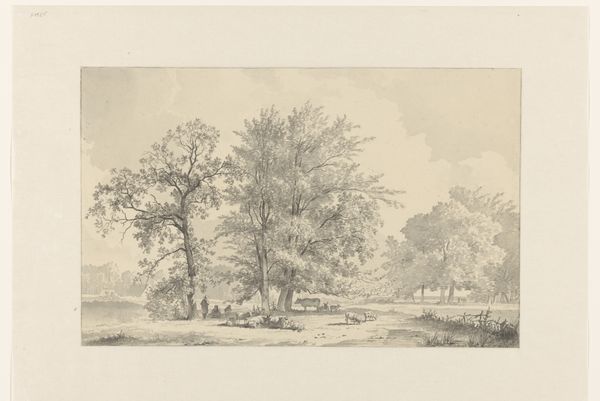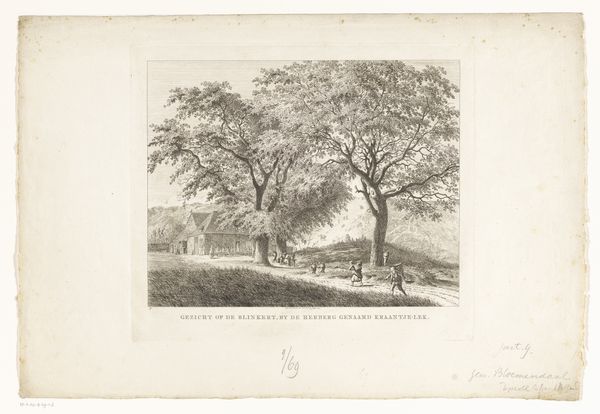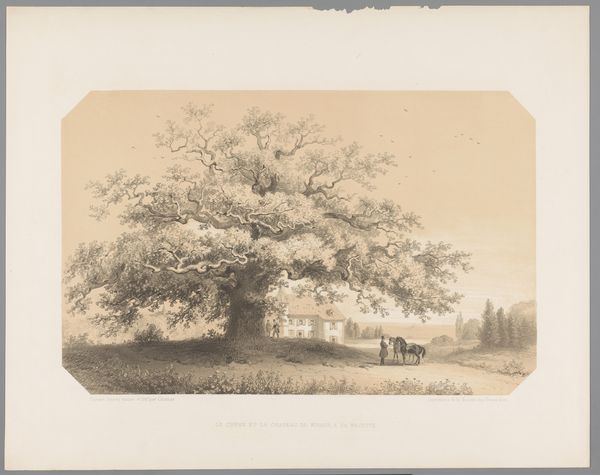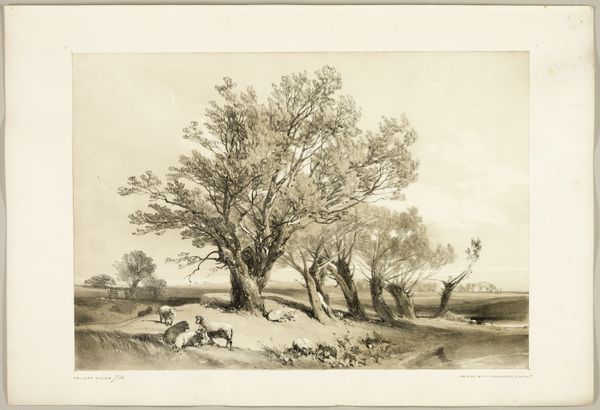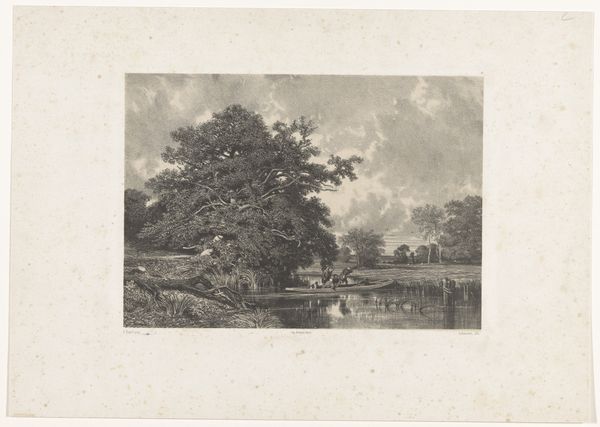
drawing, lithograph, print, paper
#
drawing
#
lithograph
# print
#
landscape
#
paper
#
romanticism
#
genre-painting
#
realism
Dimensions: 298 × 420 mm (image); 369 × 541 mm (sheet)
Copyright: Public Domain
Curator: Standing before us is "Beech, from The Park and the Forest," a lithograph created in 1841 by James Duffield Harding. Editor: It has an almost ethereal quality, wouldn’t you say? The delicate layering of tones, the almost reverential depiction of light – it’s masterfully controlled, lending an air of serenity and perhaps a hint of melancholy. Curator: Harding created this image within a broader context of burgeoning industrialization in England. These kinds of images promoted a return to nature as an idealized space but not necessarily a place for all members of society to benefit. Instead these prints offered an escape for an elite Victorian viewer into nature while reinforcing existing social hierarchies. Note, too, how these forests are populated with deer which symbolize this privilege of space. Editor: Certainly, there's a romantic sensibility at play, but I'm drawn to the mechanics of how Harding has built this scene. Look at the foreground—the intricate network of branches silhouetted against the sky and how the variations of depth emphasize the density of this forest. Curator: The trees themselves could symbolize a Victorian concept of life, resilience, and growth amidst challenge. You can read that, alongside Victorian notions of family and community within these "ideal" landscapes. Editor: Yes, there's that verticality pulling our eye upward, and those strong lines suggest an inherent strength. The layering produces a complex and balanced image, all rendered using a relatively narrow tonal range. Curator: These lithographs played a vital role, as it was Harding’s explicit attempt to create instructional manuals in which landscape painting and nature walks could serve as "therapy". By observing nature, middle and upper class men could strengthen bonds among one another. And, in this process reinforce their position as a political force. Editor: Considering its graphic simplicity, it does an effective job representing density of detail and volume. It's an insightful manipulation of tonal value that draws you into the landscape. Curator: It allows us to see the past—Victorian anxieties, class divisions and all. Harding's "Beech" reveals a very precise, class-determined idea about beauty, labor and leisure time. Editor: Absolutely. I find the elegance of the composition, combined with Harding's control of tone, really striking.
Comments
No comments
Be the first to comment and join the conversation on the ultimate creative platform.
